Utah is a landlocked state located in the western part of the United States. It is one of the few states entirely surrounded by other states. In fact, it shares a border with five states. To the east, Utah shared a border with Colorado, Nevada to the west, Arizona to the south, and Idaho to the north. It shares a border with Wyoming in the northeast and a portion of New Mexico in the southeast.
Its borders are surrounded by deserts, deep canyons, massive pine forests, vast wetlands, and towering mountains, making the state home to numerous vertebrates, invertebrates, animals, and insects. Utah has three main geographical regions: the Rocky Mountains (which cut through the northeast border near Idaho and Wyoming), the Great Basin along the border with Nevada and Arizona, and the Colorado Plateau near the eastern border with Colorado.
There is also a large discovery of fossilized remains of some rare creatures in Utah, which suggests that it was home to both common and uncommon wildlife. Some of the animals that lived in Utah are now extinct.
1. Allosaurus

Allosaurus was estimated to be 28-32 ft long.
©MattLphotography/Shutterstock.com
| Allosaurus | |
|---|---|
| Kingdom | Animalia |
| Phylum | Chordata |
| Class | Sauropsida |
| Order | Saurischia |
| Family | Allosauridae |
| Subfamily | Allosaurinae |
| Genus | Allosaurus |
| Species | Allosaurus fragilis |
| Extinct since | Jurassic Period |
Allosaurus (a different lizard) was a large Carnosaurian theropod dinosaur that lived 155 to 145 million years ago. Allosaurus is a term derived from 2 Greek words, ‘allos’ and ‘sauros.’ When put together, it means ‘different lizard.’
Allosaurus was bipedal in nature; their two powerful rare limbs aid their limping and running. This species was estimated to be 28-32 ft long and 16.5 ft tall from the fossils recovered. Allosaurus was also estimated to weigh 2,200 – 8,800 lbs. They had large, powerful jaws with long, sharp serrated teeth that were 2 to 4 inches long. Its life span was 28 years. They were better described from fossils found in the Cleveland-Lloyd Quarry in Utah.
The reason for their extinction is mostly unknown. Still, the most accepted theory is that a drought ravaged the land during that era, killing a lot of dinosaurs, including the Allosaurus.
2. Utahraptor
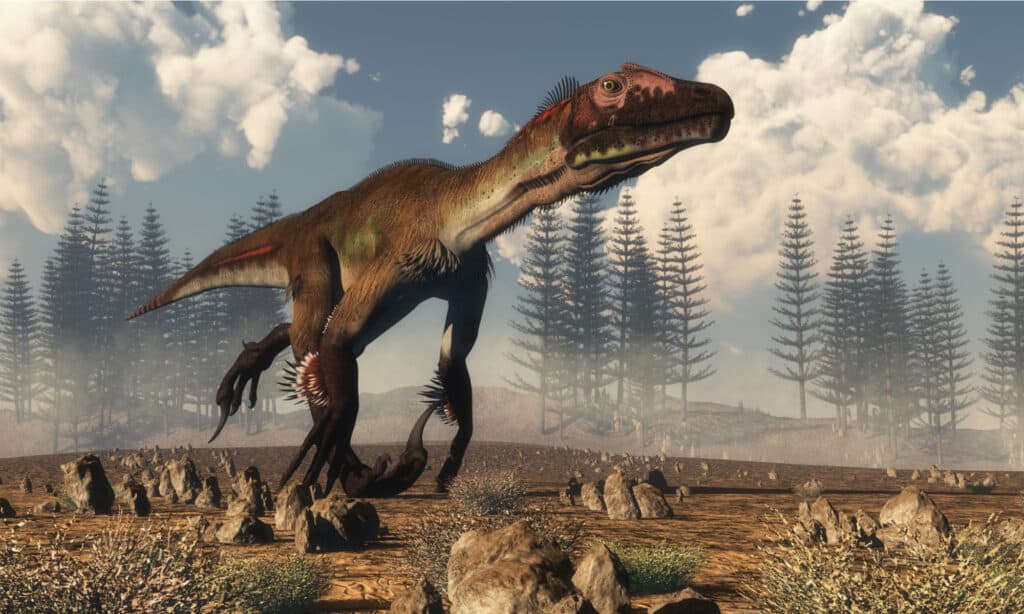
Utahraptor had huge curved claws on the second toe.
©Elenarts/Shutterstock.com
| Utahraptor | |
|---|---|
| Kingdom | Animalia |
| Phylum | Chordata |
| Class | Sauropsida |
| Order | Saurischia |
| Family | Dromaeosauridae |
| Subfamily | Dromaeosaurinae |
| Genus | Utahraptor |
| Species | Utahraptor ostrommaysi |
The Utahraptor has been compared with Velociraptors several times. Some people suggest it was the largest dromaeosaurid that habited North America. They were one of the apex predators that lived during the early Cretaceous period in Utah’s open woodlands and flood plains. Jim Jenson was the first person to discover the fossil in 1975 at the Dalton Animalia Wells quarry in Utah.
They had a birdlike structure with two long, strong limbs on which they moved. Utahraptor had huge curved claws on the second toe, which they use for defense or attacking their prey.
They were measured to be up to 5.5 ft long and 23 ft tall, and they weighed 1,000 lbs. They are carnivorous and eat any animal they can overpower in a fight.
3. Diplodocus
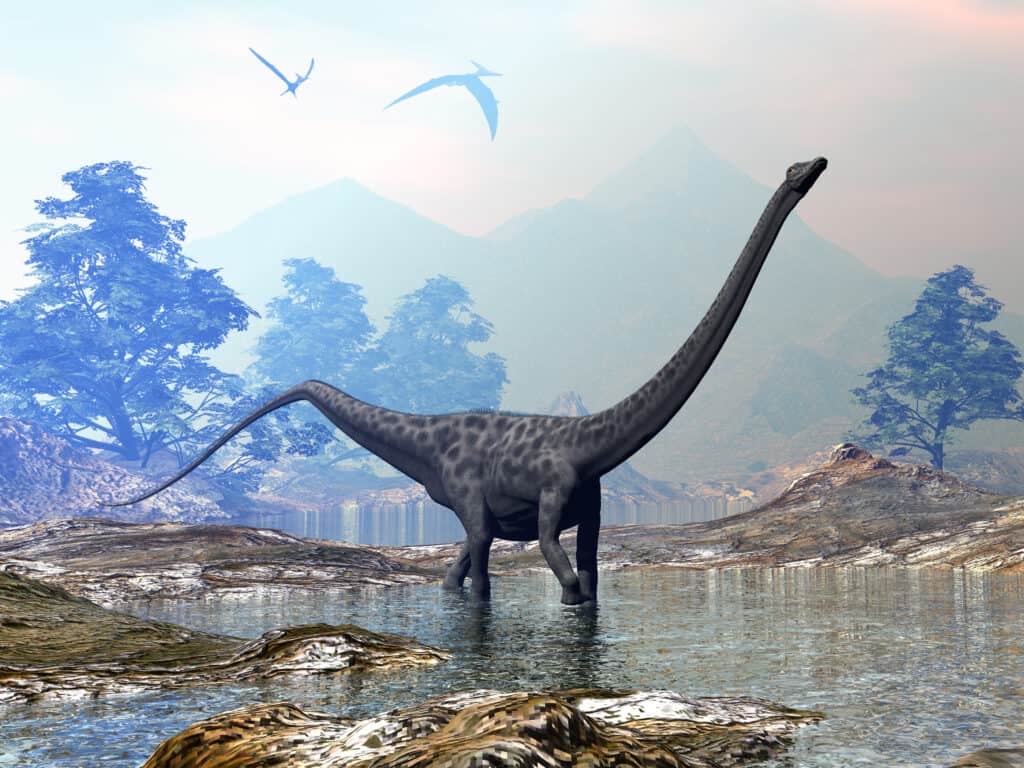
The front limbs of Diplodocus were a little shorter than its hind limbs.
©Elenarts/Shutterstock.com
| Diplodocus | |
|---|---|
| Kingdom | Animalia |
| Phylum | Chordata |
| Class | Sauropsida |
| Order | Saurischia |
| Family | Diplodocidea |
| Genus | Diplodocus |
| Living Period | Late Jurassic period, 154-152 million years ago |
Towards the conclusion of the Jurassic period, 154-152 million years ago, the diplodocus dinosaur lived in the North American region. Diplodocus remains were first discovered during the Morrison Formation in the U.S. states of Colorado, Utah, Montana, and Wyoming.
The Diplodocus was the longest dinosaur known from a complete skeleton. The front limbs of Diplodocus were a little shorter than its hind limbs, which formed a mostly horizontal stance. The size of the Diplodocus species ranged from 80 – 115 ft and weighed 22,046-35,274 pounds (10-16 metric tons). Diplodocus had a 24 ft long neck and a short 2 ft head. Its 46 ft long tail had 80 vertebrae and might have been used like a whip to attack predators or make whip-cracking noises.
The shape of its teeth suggested that it fed on plants, probably stripping them with its teeth. Their long neck made it easy for them to feed on soft leaves at the top of a tree.
The extinction of this creature and other dinosaurs is still a mystery, with different theories suggesting why they went extinct.
4. Apatosaurus
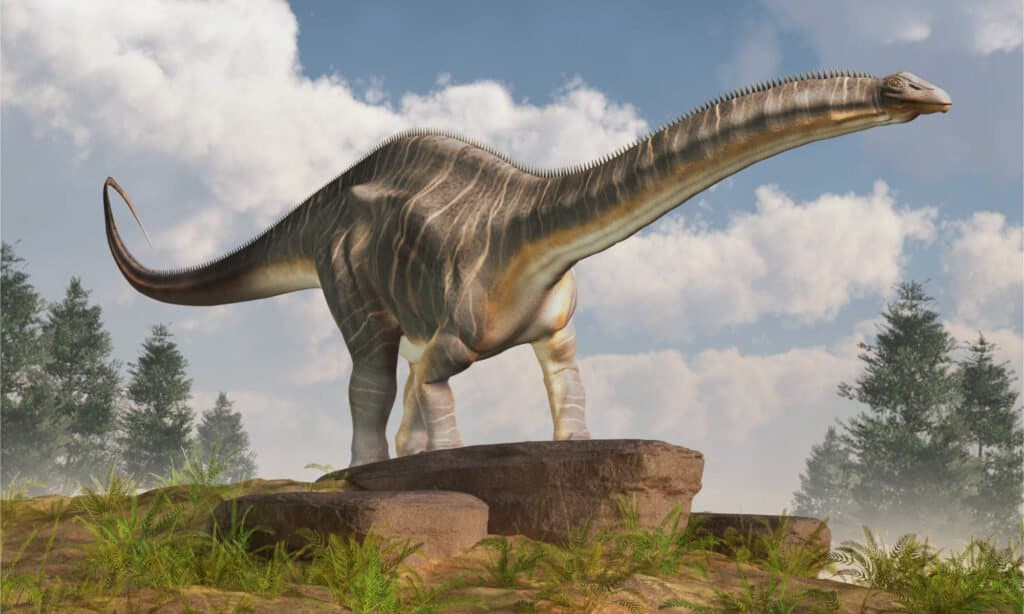
Apatosaurus were sauropods that only ate plants.
©Daniel Eskridge/Shutterstock.com
| Apatosaurus | |
|---|---|
| Kingdom | Animalia |
| Phylum | Chordata |
| Class | Sauropsida |
| Order | Saurischia |
| Family | Diplodocidae |
| Genus | Apatosaurus |
| Species | Apatosaurus ajax |
| Living Period | 152-151 million years ago |
During the Late Jurassic period, Apatosaurus was one of the sauropod dinosaurs in existence. They roamed freely across the globe, including Utah, 152-151 million years ago. Arthur Lakes and Henry C. Beckwith discovered the first remains of this giant animal in 1877 in Morrison, a town in Colorado. Apatosaurus and Brontosaurus have a similar form.
Apatosaurus are sauropods that only eat plants. Like the Diplodocus, they have a slightly longer hind limb to help them maintain a more stable horizontal stance. When fully grown, it might have stood up to 50 ft at the hips and measured 75-90 ft long. They are also estimated to weigh as much as 16,000 – 22,000 pounds.
5. Camptosaurus
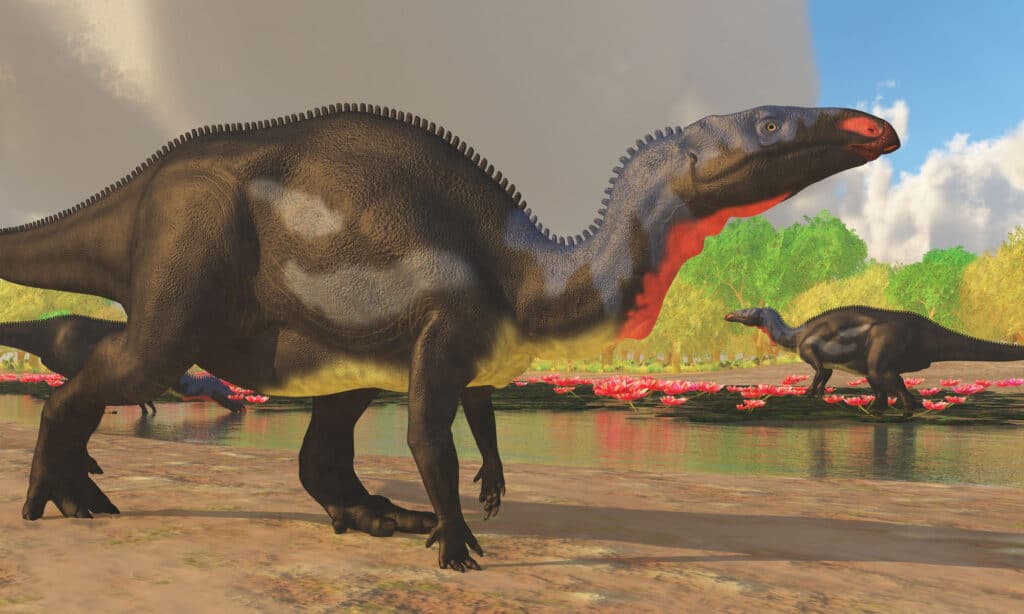
Camptosaurus was a genus of plant-eating, beaked ornithischian dinosaurs.
©iStock.com/CoreyFord
| Camptosaurus | |
|---|---|
| Kingdom | Animalia |
| Phylum | Chordata |
| Order | Ornithischia |
| Family | Camptosauridae |
| Genus | Camptosaurus |
The Camptosaurus, otherwise known as the flexible lizard, was a genus of plant-eating, beaked ornithischian dinosaurs. They existed during the late Jurassic period of North America.
Fossils have shown that these animals are robust and have giant forms. Its individual length was about 26 ft long and 6.6 ft at the hips. They had robust hindlimbs and broad feet with four toes.
The fossils of Camptosaurus have been found in places such as Utah, Nebraska, and Colorado. The Camptosaurus fossils were retrieved from Morrison Formation strata at Dinosaur National Monument in Utah.
6. Lythronax
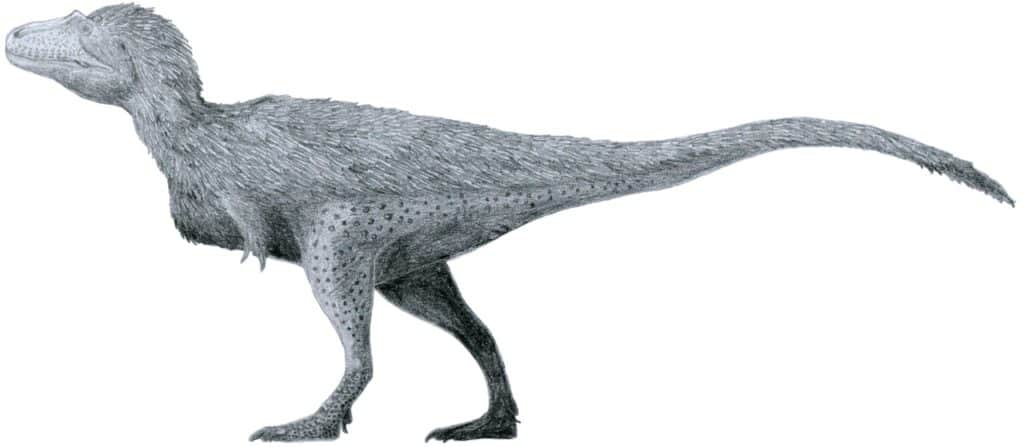
Lythronax existed around 80.6 – 79.9 million years ago during the Cretaceous era.
©Tomopteryx / CC BY-SA 3.0 – License
| Lythronax | |
|---|---|
| Kingdom | Animalia |
| Phylum | Chordata |
| Class | Reptilia |
| Superorder | Dinosauria |
| Order | Saurischia |
| Family | Tyrannosauridae |
| Genus | Lythronax |
| Species | Lythronax argestes |
Lythronax existed around 80.6 – 79.9 million years ago during the Cretaceous era. In 2019, the only known specimen of this creature was discovered in Utah. The specimen recovered contains a partial skull and skeletons.
The Lythronax (gore king) is a moderate-sized, bipedal carnivore. This creature grew up to an estimated 30 feet in length and weighed 5,500 lbs. It lived in the southern part of Utah 80 to 78 million years ago, during the late Cretaceous regime.
Genetic studies of the remains of the animal in various places suggest that it lived mostly in North America. In 2019, some fossils were discovered in Utah.
The photo featured at the top of this post is © Daniel Eskridge/Shutterstock.com
Thank you for reading! Have some feedback for us? Contact the AZ Animals editorial team.






